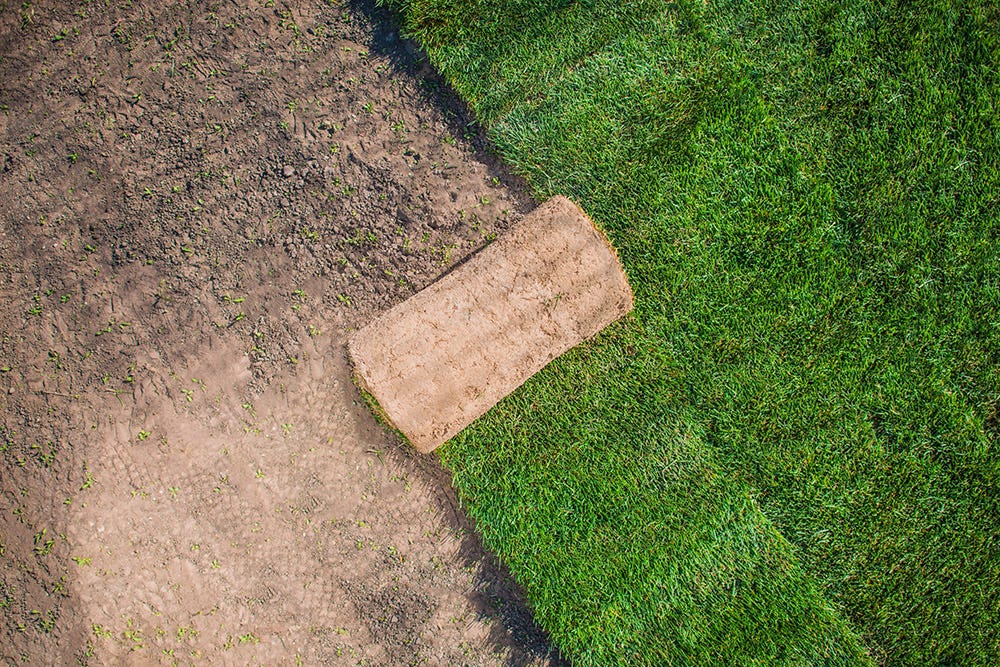
Sourcing turves
Some turf producers grow turf on plastic mesh or netting. This reinforces rolls of turf for easy handling, but it can disrupt important lawn care tasks. Netting is tough and often gets caught in machinery during processes like scarifying, pulling up whole areas of grass unnecessarily.
This mesh also adds potentially harmful plastic to your garden. We recommended using net-free turf to reduce plastic waste and make lawn care simpler.
Prepping your ground
Lay your turves so that each section overlaps slightly, staggering the seams like brickwork. Try working from wooden boards to avoid leaving foot indentations in your turf as you lay. When you’re finished laying, cut off any excess turf with a sharp knife or a garden spade to leave a clean lawn edge.
Spread a top-dressing made from sand and soil (or compost), working it into the joints to fill in minor hollows. This method will also help to knit the turves together, allowing your grasses to establish roots more quickly.
Aftercare
Remember to water your turf regularly to stop it from drying out, especially during the first few weeks and hot weather. But be careful not to over-water as this can encourage weed growth and shallow rooting, decreasing the longevity of your lawn.
Start mowing when the grass is 2.5–5cm high, taking care not to remove more than a third of the grass height at once. Raising the cutting height ensures each blade of grass retains enough surface area for energy production, keeping your lawn looking healthy and vibrant.
A little fall of rain
Spring and autumn are the best seasons for laying turves, as the rainfall allows your new grass to establish its roots, fortifying your lawn against harsh weather.
